Porridge or Oatmeal: The Breakfast Bowl Face-Off
Porridge vs. oatmeal often stirs confusion among breakfast enthusiasts searching for the perfect morning meal.
Warm, comforting dishes have fueled people across cultures for centuries with their hearty goodness.
The main distinction lies in what grains form the base, oatmeal specifically uses oats, while porridge can include various grains like rice, corn, or wheat.
Both options provide excellent nutritional benefits packed with fiber and essential nutrients to jumpstart your day.
Some food lovers prefer the creamy texture of traditional porridge, whereas others enjoy the distinct nutty flavor of oatmeal.
Regional traditions also influence how these breakfast staples are prepared and served throughout the world.
Stay with us as we uncover the subtle differences that make each morning bowl special for millions of people.
Porridge vs. Oatmeal: Are They The Same?
Porridge serves as an umbrella term for foods with a creamy, consistent texture, with oatmeal being just one variety among many types. These dishes share certain qualities but differ in key ways, primarily in their ingredients.
For oatmeal, only oats can be used to create this specific porridge, which explains why all oatmeal qualifies as porridge, but not all porridge can be called oatmeal.
The Full Porridge Guide For Everyone
Porridge is a simple, comforting dish made by boiling grains in water or milk until they reach a creamy, soft consistency. It has been a staple breakfast food across many cultures for centuries due to its affordability, ease of preparation, and nutritional benefits.
Porridge is highly versatile; while oats are the classic choice, other grains like rice, barley, millet, and cornmeal can also be used. Its mild flavor acts as a blank canvas, easily customized with sweet additions like fruits, honey, or spices, or savory toppings such as herbs, vegetables, or cheese.
Nutritionally, porridge is rich in fiber, particularly beta-glucan in oats, which supports heart health and helps regulate blood sugar.
It provides sustained energy, is gentle on the digestive system, and can be tailored to various dietary needs, from gluten-free options to high-protein versions.
Origin of Porridge
Early humans enjoyed porridge as far back as 32,000 years ago, according to scientific research. Hunter-gatherers from the Old Stone Age prepared this dish using wild oats and flatbread.
Throughout history, porridge has evolved in numerous ways across different cultures worldwide. Chinese cooks created rice porridge about 4,500 years ago, while other Asian countries developed quinoa versions at least 3,000 years before our time.
Despite its somewhat unappealing name, porridge has deep historical roots, likely derived from a French soup called potage (or pottage). People in the 17th century began using the term "porridge" specifically for ground cereals such as wheat, oats, or corn boiled with liquids like milk or water.
Popular Porridge Types
Porridge comes in many delicious forms worldwide - some hot, some cold, some sweet, others savory. Here are 7 popular types you might know (or want to try):
Congee
A beloved rice porridge across Asia, especially China. It’s made by boiling rice until soft and creamy. You can enjoy it plain or jazz it up with meats and veggies. Bonus: it’s easy to make in an Instant Pot!
Oatmeal
A classic Western breakfast, oatmeal is creamy and nutritious. Made from oats cooked with milk or water, it’s perfect with fruits, nuts, or a drizzle of honey. Plus, oats star in many healthy snacks like cookies and bars.
Grits
Originating from Native American cuisine, grits are made from ground corn (hominy or white corn). Popular in the American South, grits are boiled until thick and served savory with butter or cheese.
Harissa
A traditional Armenian porridge made from roasted or dried wheat, often cooked with lamb or chicken. It has a rich, hearty texture and flavor rooted in the Armenian highlands.
Genfo
From Ethiopia, genfo is a thick porridge made from grains like barley, millet, or sorghum, often mixed with chickpeas. It has a unique shape with a center well filled with spices or herbs, offering a flavorful twist.
Polenta
An Italian favorite similar to grits, polenta is made from boiled flint cornmeal. Cooked slowly, it becomes creamy and comforting, perfect served with rich dishes like ratatouille or topped with cheese and mushrooms.
Hasty Pudding
Once a European dessert, now an American classic, hasty pudding is a wheat or cornmeal porridge cooked with milk or water. It’s thicker than many porridges and often served with sweet toppings like cream or ice cream.
Oatmeal: Humble Grain with Powerful Benefits
Oatmeal is a dish made by cooking oats in water or milk until they reach a creamy, porridge-like consistency. While “oatmeal” often describes rolled or instant oats cooked as a breakfast cereal, it can be made from any oat variety.
Oatmeal is loved for its comforting texture and mild, nutty flavor, making it easy to customize with sweet toppings like fruits and honey, or savory ingredients like nuts and spices.
There are seven main types of oats: oat groats, steel-cut oats, Scottish oats, rolled oats, instant oats, oat bran, and oat flour.
Nutritionally, oats and oatmeal are rich in soluble fiber, especially beta-glucan, which helps lower cholesterol and stabilize blood sugar levels. They’re also a good source of protein, vitamins, and minerals.
Porridge vs Oatmeal: The Complete Comparison
Porridge and oatmeal have some key differences. Here is a brief table to compare them.
| Aspect | Porridge | Oatmeal |
| Preparation | Boiled grains (rice, maize, barley, etc.) in water, milk, or broth | Cooked oats (rolled, steel-cut, or instant) in water or milk |
| Texture | Creamy, thick, varies by grain | Varies by oat type; from chewy to creamy and smooth |
| Ingredients | Various grains including oats | Only oats |
| Toppings | Savory or sweet toppings like herbs, veggies, fruits, nuts | Mostly sweet toppings like fruits, nuts, honey, seeds |
| Serving | Typically hot or warm | Served warm or cold (e.g., overnight oats) |
Basic Preparation
Porridge is a broad term for dishes made by boiling various grains, such as rice, barley, maize, buckwheat, or oats, in water, milk, or broth until they become soft and creamy. This method is common worldwide and varies widely depending on the grain and cultural traditions.
For example, Asian congee uses rice and often broth, sometimes with an extra soaking or simmering step to break down the grains further.
Oatmeal, a specific type of porridge, focuses exclusively on oats, whether steel-cut, rolled, or instant, which are cooked in water or milk. The cooking time and method depend on the oat type, affecting the final texture and consistency.
Overall Texture
The texture of porridge can range widely depending on the grain used and cooking method. Most porridges tend to be thick, creamy, and smooth but can also be more gelatinous or even slightly chewy depending on the grain.
Oatmeal’s texture varies greatly by oat type: steel-cut oats offer a chewy bite due to less processing, while rolled oats produce a creamier consistency, and instant oats yield a softer, mushier result. Additionally, the amount of liquid and cooking time influence how thick or runny the oatmeal or porridge will be.
Main Ingredients
Porridge includes a wide variety of grains from different regions, such as rice in Asia, barley in Europe, millet in Africa, and maize in the Americas. Some porridges incorporate additional ingredients like vegetables, meats, or spices to make savory versions.
In contrast, oatmeal is strictly made from oats, which can be processed in different ways but always uses the same base grain. Oats are prized for their nutritional content, including soluble fiber and protein.
Topping (Or Garnishing) Options
Toppings for porridge vary greatly worldwide and depend on whether the dish is sweet or savory. Savory porridges may include herbs, spices, vegetables, or meats, while sweet porridges can be garnished with fruits, nuts, seeds, honey, or syrups.
Oatmeal toppings typically lean towards the sweet side, with popular additions including fresh or dried fruits, nuts, seeds like chia or flax, and natural sweeteners like honey or maple syrup. These toppings enhance flavor and add texture and nutrition.
Serving
Porridge is usually served hot or warm, making it a comforting meal especially in colder climates or seasons. However, some porridges can also be eaten cold depending on local preferences.
Oatmeal is traditionally served warm but has gained popularity as a cold dish too, especially in the form of overnight oats, which are soaked in liquid and eaten chilled.
Benefits of A Bowl of Porridge and Oatmeal
Here are some benefits that you can get from porridge and oatmeal.
Best Recipes of Oatmeal and Porridge
Check out these recipes with porridge and oatmeal! These meals prove good food doesn't need fancy ingredients or complicated steps.
Chinese Chicken Congee
Feeling a bit under the weather? Chinese-style chicken congee might be just what you need to lift your spirits.
This warm, soothing bowl combines rice slowly simmered in savory broth with tender chicken pieces and zingy ginger for the perfect comfort food.
Making this congee at home is surprisingly easy, and the results are absolutely delicious - perfect for those chilly days when you need something warming from the inside out.
Turkey Congee
Thanksgiving leftovers find new life in this delicious turkey congee, where Eastern and Western flavors come together perfectly. Most families have extra turkey after the holiday feast, and this recipe offers a tasty solution to use up those remains.
The process involves simmering rice until it breaks down into a comforting porridge, then adding your shredded turkey meat.
Apple Cinnamon Oatmeal
Morning meals feel better when your home smells like apple pie, and this apple cinnamon oatmeal hits the spot perfectly.
The warm mix of sweet apples and spicy cinnamon creates a breakfast that fills your kitchen with amazing scents while giving you energy for the day ahead.
Banana Oatmeal
Banana slices make a perfect topping for your morning oatmeal, and this quick meal needs just 4 simple ingredients. The entire process takes only 5 minutes - just cook rolled oats in milk with a sprinkle of cinnamon until warm and creamy.
Ripe bananas add natural sweetness when sliced on top, while a drizzle of honey brings extra flavor to each spoonful.
Southern-Style Grits
Homemade grits come together with just a handful of basic items and almost no prep time, thanks to the magic of a big pot on your stove doing most of the work. Southern-style grits develop their rich, smooth texture from a simple mix of heavy cream, milk, butter, and dried corn stone-ground grits from the store.
Got Questions? We’ve Got Solutions
1. Can I substitute porridge for oatmeal in recipes?
Yes, you can substitute porridge for oatmeal in most recipes, but the texture might be different. Porridge is typically creamier while oatmeal has more texture, so adjust liquid amounts accordingly.
2. Which has more protein - porridge or oatmeal?
Oatmeal typically contains more protein than traditional rice or corn-based porridges. One cup of cooked oatmeal provides about 6 grams of protein, while rice porridge offers around 2-4 grams.
3. Are porridge and oatmeal equally filling for breakfast?
Both are filling, but oatmeal tends to keep you satisfied longer due to its higher fiber content. The beta-glucan fiber in oats slows digestion and helps maintain steady blood sugar levels throughout the morning.
4. Do porridge and oatmeal cook in the same amount of time?
Cooking times vary - traditional oatmeal takes about 5-10 minutes, while some porridges like rice porridge might need 20-30 minutes. Quick-cooking versions of both are available for faster preparation.
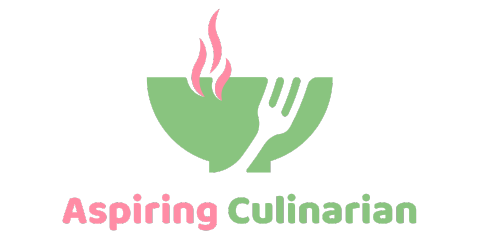
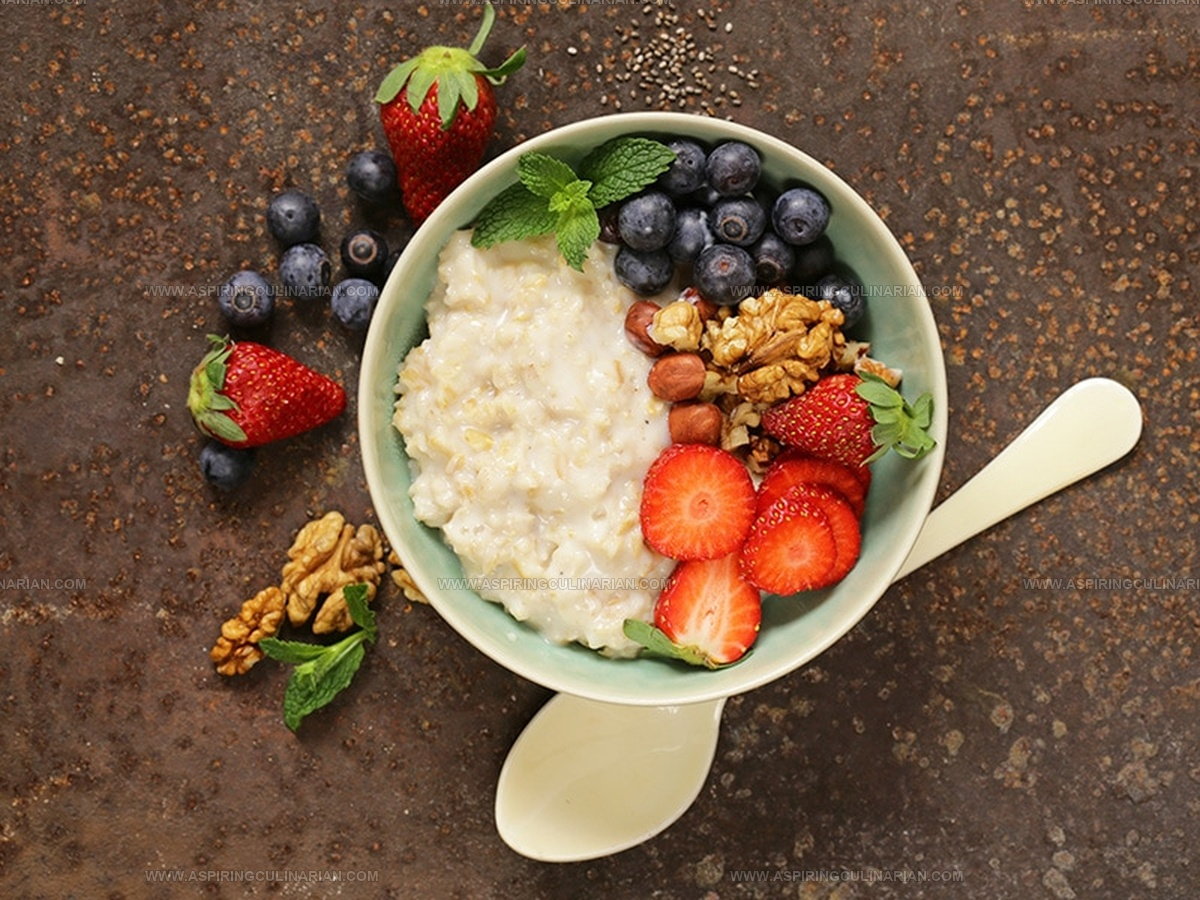
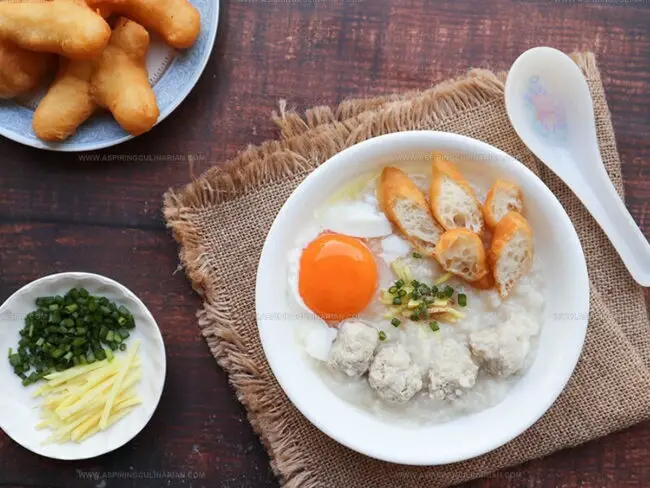
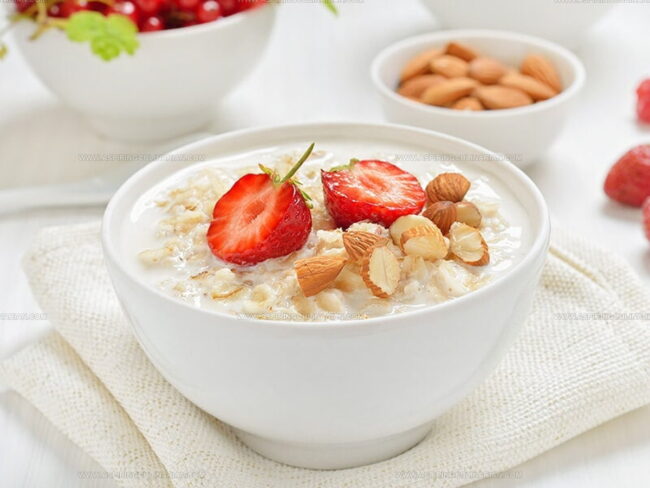
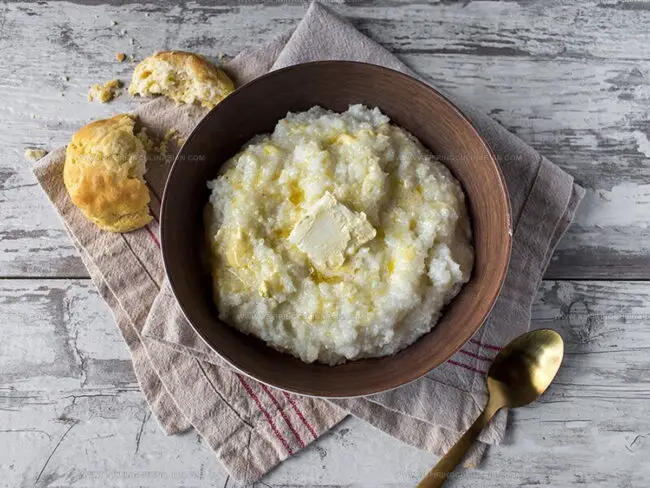
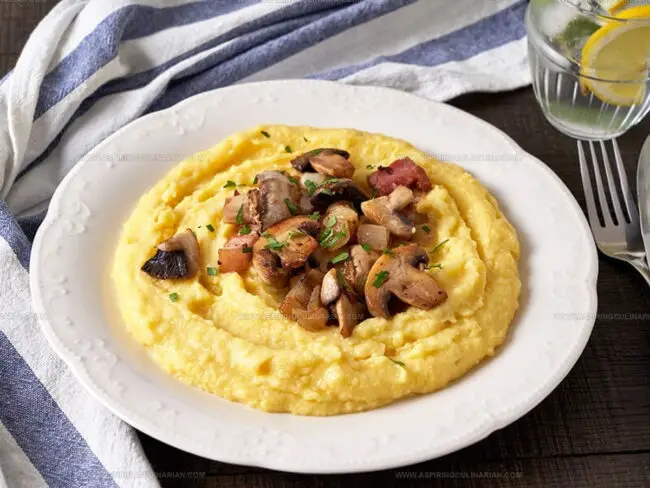
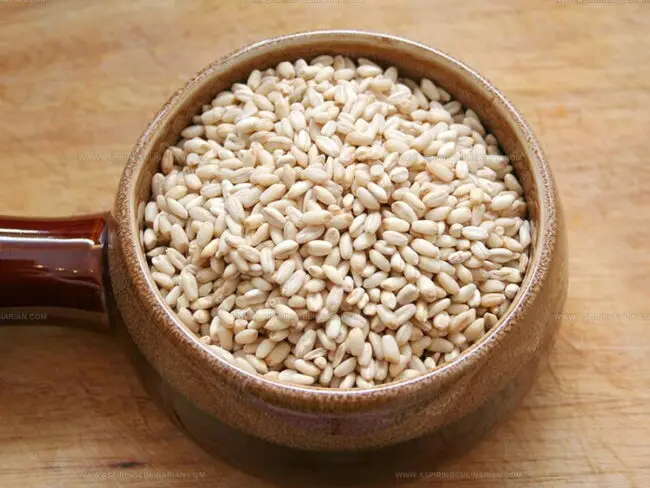
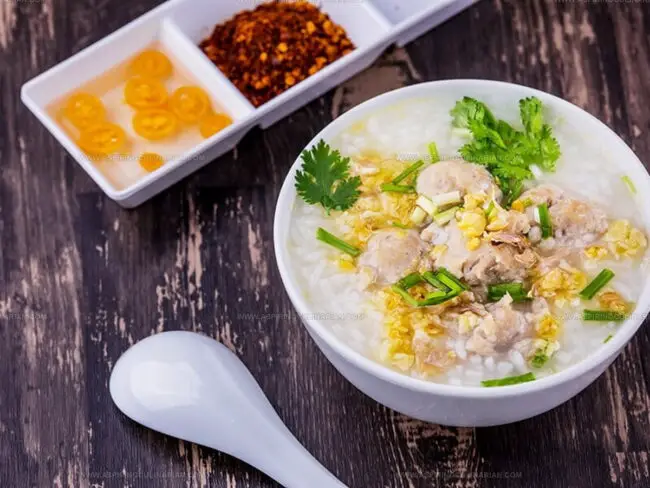
Nathaniel Brooks
Founder & Recipe Developer
Expertise
Farm-to-table cuisine, Seasonal recipe development, Culinary storytelling
Education
Ivy Tech Community College – Indianapolis, IN
Culinary Arts / Hospitality Administration & Events
Focused on hands-on training in classical and modern culinary techniques.
Nathaniel’s story starts in the foothills of the Appalachian Mountains, where farm stands, backyard gardens, and old family recipes shaped his love for real food. After graduating from Ivy Tech Community College in Indianapolis, he spent years working in farm-to-table kitchens, learning how to turn local, seasonal ingredients into something memorable.
Today, Nathaniel pours that same spirit into every single recipe on Aspiring Culinarian – recipes that feel real, comforting, and connected to the land. When he’s not in the kitchen, you’ll find him foraging wild herbs, chasing sunsets with his camera, or writing about the flavors that shaped his roots.